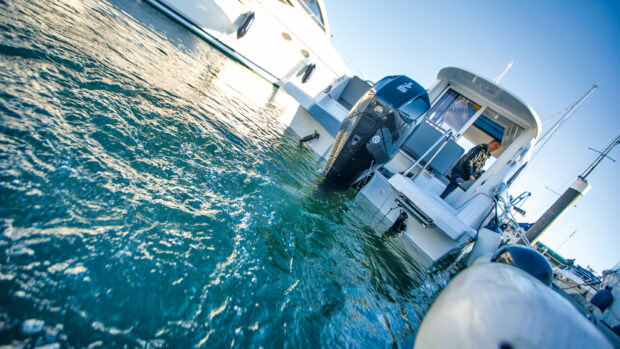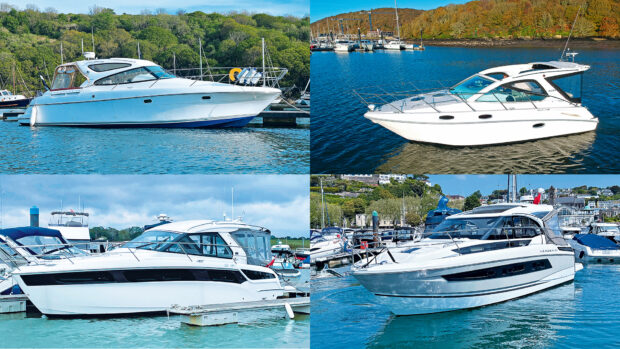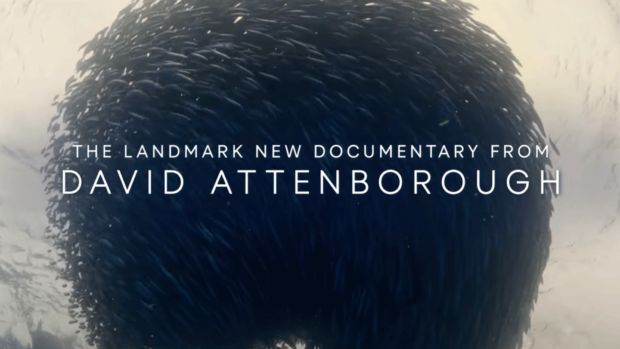Dutch start-up Tanaruz Boats has launched a 15ft 3D-printed boat called the Tanaruz DSI, which you can shred and print again…
Upgrading to a newer or bigger boat is usually a long, costly and often wasteful process, but imagine if you could simply melt it down and start again. That’s exactly what Dutch start-up Tanaruz Boats is proposing to do with its new recyclable, 3D-printed boat.
Once you’ve bought your first boat from them, when the time comes to replace it, you can simply take it back to them and they will shred it, melt it and reprint it into a new one. Not only does this avoid using precious virgin raw materials every time you need a new boat but the process is so efficient that it’s far cheaper and more sustainable too.
Need a bigger boat? No problem, just pay for the extra material and they will add a few extra feet to it. Fancy a change of style? Even easier, just pick a different design and the printer will take care of it for as little as 10 per cent of the original purchase price.
3D-printed boats for all
Tanaruz Boats is the brainchild of Alex Shifman, a naval architect and marine engineer, who tried to convince a number of Dutch yards to adopt this new way of building boats. After a less than enthusiastic response he set up his own company, RAW Idea, to prove them wrong.
“Traditional shipbuilding involves a lot of manual labour, especially for customised models,” explains Shifman. “This drives up the price of recreational vessels and places them beyond the reach of most, except the lucky few. Tanaruz wants to make boating affordable for all, especially those who are looking for a modestly priced and sustainable product.”
 Watch the video
Watch the videoIt’s a bold vision but one which is already starting to bear fruit. Tanaruz delivered its first production boat, a 15ft electric boat, to a private customer in June, with another six contracts already signed and many more currently in negotiation.
Part of that is down to an attractive starting price of just €15,000 for the base boat or around €21,000 when fitted out with an electric outboard motor and batteries, but it’s also the appeal of owning a fully recyclable all-electric boat with minimal environmental impact.
“Our vessels are made of reclaimed polymers and our production process makes the boats virtually indestructible, yet circular,” says Shifman. “Should you wish to upgrade to a larger model for your growing family, your old Tanaruz boat will be incorporated into the raw materials of the newly printed one.”

The first customer ready 3D-printed boat from Tanaruz takes to the water
Plastic fantastic
It hasn’t been an easy process getting to this stage. The journey has involved countless prototypes and a fair few failures along the way as the team tried various different materials, printing methods and bonding solutions before settling on the perfect combination.
The key to it was using polypropylene flakes containing a 30% blend of glass powder to ensure each printed layer bonds perfectly to the previous one to create a single robust structure.
These flakes are derived not from ‘dirty’ waste, such as recycled food packaging, but ‘clean’ waste left over from other industrial manufacturing processes. This ensures a consistent quality of polypropylene that can be dyed to whatever colour the customer wants.

An articulated robot arm ‘prints’ each boat by building up layers of melted polypropylene and glass powder in a single continuous extruded filament
It’s not just the colour that can be customised; the size, model shape, propulsion package and spec details can all be specified on the Tanaruz app, allowing clients to personalise their boats, see what they look like and work out how much they cost before ordering.
In the future they may even be able to help design their own boats for Tanaruz to print. The beauty of it is that once agreed and paid for, the details can be sent direct to the printer with minimal human input in either the buying or building process.
The printer itself just needs to be supplied with a sufficient quantity of flakes and left to get on with the job. With no need for any down time, the printer can work 24 hours a day at a rate of 25kg per hour, which equates to around two 3D-printed boats per week.

The Tanaruz S has a small cabin and an open cockpit
The polypropylene flakes are melted to 200°and extruded through a nozzle in a continuous stream, layer on layer, until the entire monocoque structure is complete.
Carefully controlled cooling and the decision to build it in one continuous section also proved to be a breakthrough after previous attempts to print it in sections then bond them together proved impossible due to tiny differences in warping during the cooling process.
This does currently restrict the maximum size of the boat to around 8m, due to the size and articulation of the printer’s robot arm, and the requirement to print everything, including the hull, deck, bulkheads, seats and most of the console, in one continuous stream, albeit with thicknesses ranging from 8mm to 24mm depending on its structural significance.

Each 3D-printed boat has to be engineered for printing but with no mouldings required customisation is relatively simple
However, Shifman is confident that both these restrictions can be overcome in future.
The secret of 3D-printed boat design? Keep it simple
In the meantime Tanaruz has kept things simple by offering four basic model shapes in a range of sizes from 4.5m to 7m.
Rather than trying to ape existing boat designs, Shifman has opted for very simple, clean, almost toy-like shapes that emphasise the break with traditional boat building methods. These can be left unfinished to show off the layered printing technique or milled for a smoother, glossier finish.

The Tanaruz DDM features a proper little pilothouse
The standard propulsion package is a 1.1kW Aquamot Trend electric outboard motor linked to two or more long-life silicone AGM batteries for a cruising range of around four hours or 50km.
The fitting out of the bare hull is being done by a third party called Bakker Sails so Tanaruz can focus on hull construction. These first models are being built to RCD Category D rating for sheltered or inland waters, but this is something that could be changed in future.
For the moment, the restrictions on the size, shape, finish and performance dictated by the printing process means this new boat-building method is unlikely to be adopted by the big brands any time soon, but the massive reduction in man hours along with the ability to customise craft at the touch of a button and recycle hulls is bound to catch their attention.
As Shifman puts it, “When you buy a Tanaruz you don’t just own a boat, you own the material too so we can incorporate it into your next one.”
First published in the August 2022 issue of MBY.

Tanaruz DSI

The DS is a modern take on an open launch










